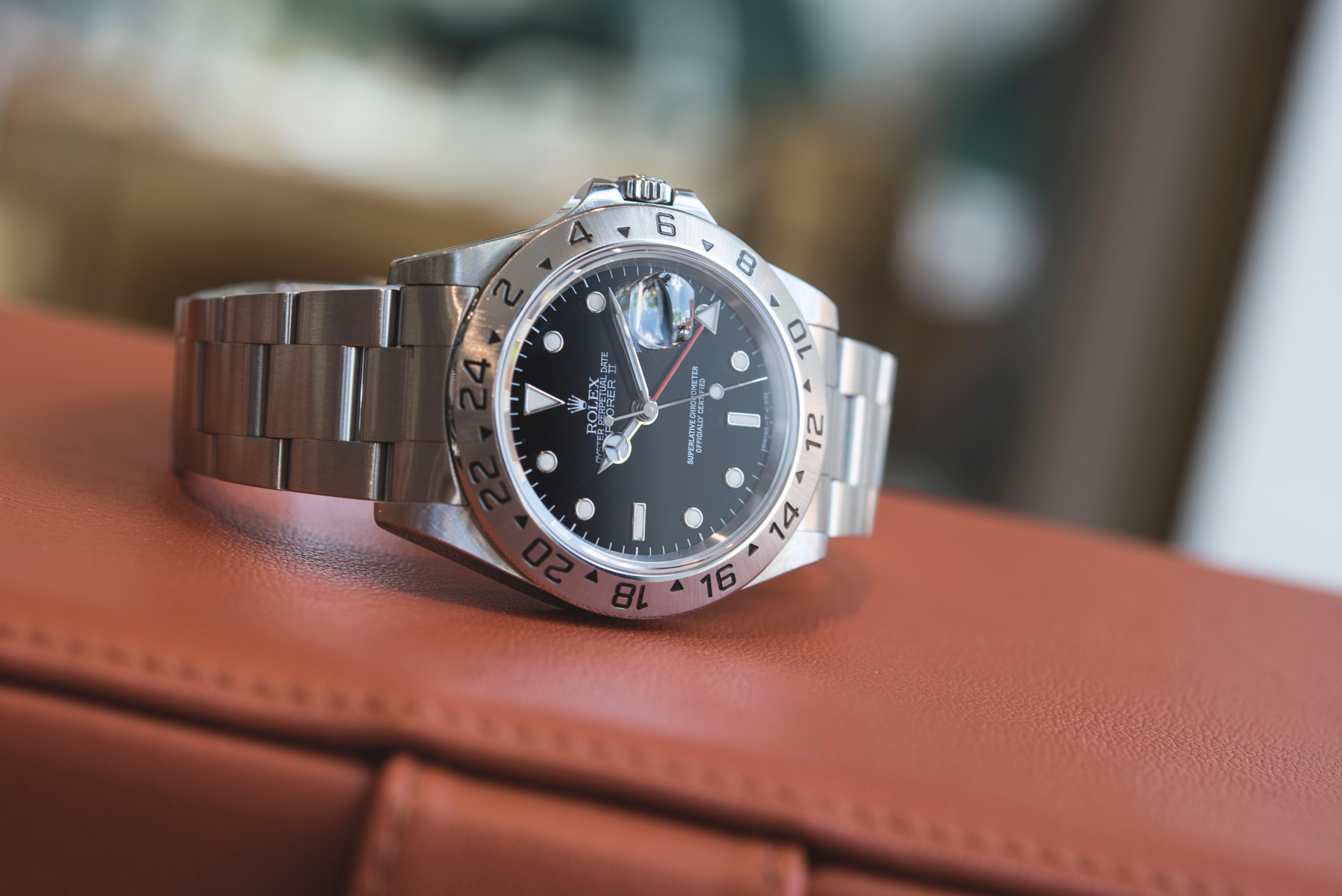Fresh Set is an ongoing series where readers follow the newest StockX Watch team member, Hadjj, as he learns more about the in’s and out’s of watches.
When I first got on the watch team, I was instantly hit with new terminology and jargon that I didn’t know existed. Joining the team was the equivalent of learning a new language and felt like my two semesters in college, unsuccessfully, learning Italian. It all started with not knowing there were categories of watches. I thought every watch was just a watch, naturally. But now, I am more knowledgeable and I want to make sure my fellow newbs don’t experience the same level of ignorance.
One of the first watches that I encountered at StockX was a GMT. Our director of watches, Blake, showed me a picture of a Rolex Pepsi and I fell in love. It was a love that was indescribable, though, because I didn’t even know these watches existed. I didn’t know the type of watch it was, its importance, its history, and why it cost almost $20K on our site. Other than learning their nicknames, I still didn’t know the point of a GMT. But now, with the release of Rolex’s new Batman GMT on Jubilee, I see no better time to learn about them.
A Brief Run Through of the GMT

3 different iterations of the Rolex GMT Pepsi
Blake does a good job of explaining the history of GMT in depth in his article, but here are a couple of brief tidbits. The term GMT (Greenwich Mean Time) can be traced back to 1675, when sailors from Greenwich, England needed a referencing time point when out at sea. From its humble beginnings in the sea, the GMT later took on the air when in 1954 the popular airline at the time, Pan Am, asked the swiss-watch brand, Rolex, to make a special watch to keep track of time in two different locations. From necessity bred one of the most iconic watch models and has now been adopted by many brands in multiple variations.
And just how did those pilots use this function? On the common Rolex GMT, it consists of 4 hands, the classic hour, minute, and second hand, with the addition of the GMT hand. Most GMTs have a static bezel with 24 hour markers to represent the secondary timezone (unless it’s a rotating one that can track the timezone of a third timezone, but that’s a whole other lesson for another time). Since the minutes remain the same within all timezones, the only thing necessary to move is the GMT hand to set on a specific hour to represent your desired timezone to track. The opposing colors on the bezel represent AM and PM, bringing even more accuracy to keeping up with the various timezones.
Rolex set a trend by introducing the GMT model back in the 1950s and since then, the watch has been adapted by various watch makers, both big and small. With its multiple interpretations, the GMT has evolved further from its Pan Am colors and has been hit with new hues and shades to fit various personalities. With all of that said, it has maintained its utilitarian purpose of keeping track of timezones, while still being seen as a nice piece of arm jewelry. Thanks to aviation, we have what is now considered a staple in the watch community.
Test Drive

The Rolex Explorer-II 16570
With my new understanding of how GMTs work and my upcoming trip to the west coast, I figured it only be right that I take one for a spin as I entered a new timezone. Jim McClearly, a fellow watch team member, offered to lend me his Rolex Explorer II, which I didn’t even notice was a GMT. Jim gave me his 16570 referenced Explorer, which released originally in 1989 and is the third updated reiteration of the 1971 4-digit model.
Wearing it on the plane made me a big fan of GMTs. I went into watches not really caring for them because I was both unaware of their functionality and they just seemed pointless. But using one in action delivered a whole new perspective to the watch style.
Another thing that blew me away was the fact that such technology was present when GMTs were created back in the 50s. The fact that I can keep track of two different timezones simply from my wrist should make anyone rethink that watches are obsolete. This is before your digital favorites like the Apple Watch and the G-Shock, which should add another level of respect for the series of GMTs in the market.

Hadjj wearing the Rolex Explorer-II 16570 on his flight to the west coast
The GMT option was also extremely valuable when on the plane. We become so reliant on our current technology, that we are helpless when we can’t use all of its features. Having to turn off my phone service left me without any updates to time and I needed to know time back in the office to get a specific project done. Crunched for time, the last thing I wanted to worry about was doing the math between EST and PST. The Explorer II had my back and speaks to how we should be viewing watches. Sure watches are these expensive pieces of metal, but at the same time, they are tools to help make your life easier, and nothing taught me that more than my experience with the Explorer II.
Final Words
Wearing the Rolex Explorer II was more than just an attempt to stunt on people, but really increased my appreciation for watches. Despite them being the “only acceptable jewelry” for men at a certain age, they’re really just these great mechanical tools on our wrists. Whenever I do these articles, I seem to end up finishing them with a new favorite type of watch and greater respect for their function. Watches are cool and GMTs are now my thing.



